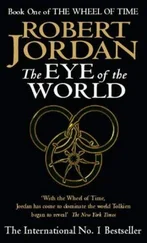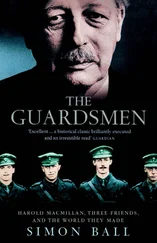By late February 1768, the King had consented to defray the costs of sending observers to the southern hemisphere and, at the same time, he ordered the Admiralty to provide a suitable ship to take them to their destination.[13] By the end of March, the Admiralty had agreed which ship to purchase. It was called the Earl of Pembroke . It had been built in Whitby a little more than three years earlier and was currently lying unused in the Thames to the east of the present location of Tower Bridge. Just over a week later, on 5 April, the Admiralty informed the Navy Board, who were responsible for the day-to-day administration of the Royal Navy, that the ship, now renamed HMS Endeavour , and at the relatively small size of 32 metres long and 9 metres wide, should be prepared and armed as necessary for ‘conveying to the southward such persons as shall be thought proper for making observations on the passage of the planet Venus over the sun’s disc’.[14]
For the time being, the ship had no commander and, more importantly, no specific destination in the southern hemisphere for observing the astronomical event. In the discussions leading to the drafting of the memorial, however, suggestions were made that one of the Marquesas Islands, which had been sighted by Álvaro Mendaña in 1595, or one of two islands in Tonga (then named Rotterdam and Amsterdam Islands and last seen by Abel Tasman in 1643), might be suitable, but no one was certain precisely where in the ocean these likely candidates were.[15]
While the issue of the ship’s destination remained unresolved, that of the Endeavour ’s commander was moving swiftly along. Sometime during the week after the order to get the ship ready for sea, that is before mid April 1768, the Admiralty found in James Cook the man that they wanted to appoint to command. Cook was not a young man and, as far as the Royal Navy was concerned, fairly inexperienced, but he certainly had talent.[16] He was born in Yorkshire and first went to sea when he was eighteen years old working for a Whitby company involved in carrying coal from the northeast of England to London. Once Cook’s apprenticeship was over he sailed on ships throughout the North Sea, from Holland in the south to Norway in the north. He did well, and he was promoted, but then, and for no reason that has come down to us, he volunteered, in 1755, to join the Royal Navy in Wapping, East London. Two years later he became a master, qualified, therefore, to sail naval ships. By then, however, war had erupted between Britain and France and their respective allies, and Cook was sent on a naval squadron to North America where he participated in several battles in and around the St Lawrence River. When, in 1763, peace came to bring an end to what was then referred to as the Seven Years War, Cook, who had by now distinguished himself in surveying and cartography, in addition to navigation, was appointed to be the surveyor on a naval expedition to Newfoundland over which Britain had been given sovereignty under the terms of the peace treaty. There he remained, apart from short spells back in London, until the early part of November 1767, when he returned bearing a cache of elegantly produced maps and hydrographic surveys of the coasts of this geographically complicated island.[17]
Cook intended to return to Newfoundland in the spring of 1768, once he was satisfied that the engravers were competently handling his manuscript maps, but this didn’t happen. His requisitions to the Admiralty to prepare his surveying ship for the next season coincided precisely with their search for someone to command HMS Endeavour . Cook never crossed the North Atlantic again. Instead, from now until his murder in Hawaii in February 1779, his life was bound up wholly with the Pacific.
It was now May 1768. The Endeavour was being prepared but where was it heading? Cook, and Charles Green, whom the Royal Society had already appointed as the expedition’s astronomer, were the designated observers. They needed an island on which they could erect their observatory. Would Cook be able to find the Marquesas or Amsterdam and Rotterdam island? And if he could, would the ship be welcomed or attacked?
While these questions were being discussed in the Admiralty and the Royal Society, something wholly unexpected happened.[18] On 20 May 1768, Samuel Wallis, a naval commander, arrived in London with incredible news. In August 1766, Wallis had been given command of HMS Dolphin whose objective was to sail into the Pacific in search of Terra Australis Incognita , the substantial land mass that was supposed to exist in southern latitudes – Alexander Dalrymple, the noted hydrographer and cartographer, preferred to use the term ‘Southern Continent’ and many followed his example.[19] Wallis reported that high land had been seen in the distance during the voyage but what caught his and everyone else’s imagination was his discovery of an extraordinary island and civilisation, which he named, in honour of his sovereign, ‘King George the Third’s Island’.[20] Wallis was an excellent navigator and equipped with the latest instruments to calculate that most elusive of navigational parameters – longitude. He reported that this island, which had abundant food and water, a healthy climate, a good anchorage and welcoming people, and which we now know as Tahiti, lay at 17 degrees 30 minutes latitude and 150 degrees longitude, west of London, precisely within Maskelyne’s oceanic rectangle.
Wallis knew nothing about the Royal Society’s interest in tracking Venus and the Admiralty had not expected him to arrive back in London for at least a year, that is sometime in 1769. As it happened, because of widespread illness among his crew, his own weakness and serious doubts that his ship could stand any more wear and tear, Wallis had decided to abandon a part of his surveying objectives and hurry home by way of the Cape of Good Hope (in spite of his instructions to return by way of Cape Horn).[21] History would have been very different had he carried out his instructions to the letter.
Wallis’s discovery of the island and of an excellent anchorage in the very north of the island, at a place he named Port Royal, or Matavai Bay in Tahitian, where he had anchored on 23 June 1767, could not have been better news for the Royal Society. The vague destination of the Marquesas and Tonga was now replaced by a firm, precise and, therefore, perfectly findable location. The predicted date of the transit was almost the same as the date of Wallis’s anchorage so that what he described then, especially the weather, would equally apply to the Endeavour ’s stay. On 9 June 1768, a fortnight after Cook had officially taken charge of the Endeavour , the Council of the Royal Society endorsed the choice of the island discovered by Wallis as the expedition’s destination.[22] In the following month, the Admiralty reaffirmed the Society’s decision of where to observe the track of Venus when they presented their instructions to James Cook, who had, in the meantime, been promoted to the rank of lieutenant.[23] To guide him to Tahiti, the Admiralty presented Cook with copies of ‘such Surveys, plans and Views of the Island and Harbour as were taken by Capt Wallis, and the Officers of the Dolphin when she was there’.[24]
The Royal Society Council meeting minute of 9 June 1768 recorded the important decisions that had been taken since the ‘Memorial’ of mid February: the observers, Cook and Green, had been chosen and their salaries agreed; the ship and its commander had been commissioned; and the location pinpointed in Maskelyne’s rectangle of southern sea.
At this point, the scientific aspects of Cook’s expedition to the Pacific were astronomical and geographic. The minute of the Royal Society’s Council meeting, which recorded Cook and Green’s appointment, also had a small note to the effect that the Society’s secretary would be asking the Admiralty that ‘Joseph Banks … being desirous of undertaking the same voyage … for the Advancement of useful knowledge … He … together with his Suite … be received on board of the Ship, under the Command of Captain Cook.’[25]
Читать дальше












